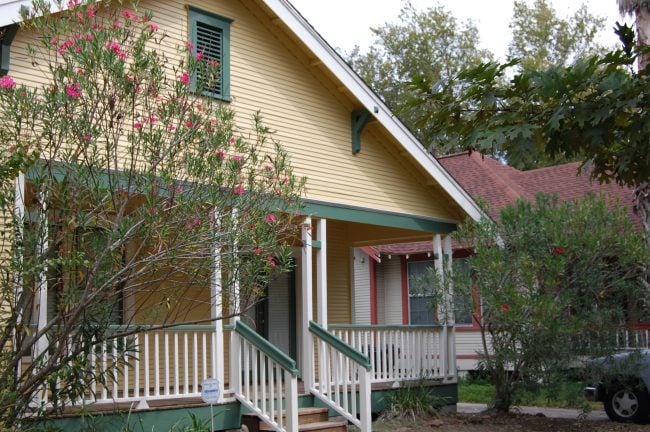
Few things are more misunderstood about the home than attic ventilation. In essence, all ventilation is about circulating air to keep it fresh and to reduce moisture levels. About 90 percent of homes in the US have unreasonably high levels of moisture. Understanding whether your home could benefit from some form of attic ventilation might just be, if not a life-saver, a roof-saver. Here are some of the myths and the facts you need to know about attic ventilation.
1. More Attic Ventilation is Good
Just like properly sizing your furnace and air conditioning unit, you want precisely the right amount of attic ventilation for your home. Insufficient ventilation can lead to moisture problems during the winter and decreased energy efficiency during the summer but too much ventilation can be just as bad, if not worse. Roof vents create an additional roof penetration, essentially another place of vulnerability where leaks can occur. Some vents are necessary, but you don’t want to needlessly increase the number of roof penetrations. More than leaks, these seams can cause blowouts during a hurricane or allow sparks from a wildfire to enter your home and set it ablaze.
So, how much ventilation should you have? Without exception, you should talk to a professional to determine what your home requires. Generally speaking, you need a ratio of 1:300, where for every 300 square feet of ceiling space, you need 1 square foot of attic ventilation. That said, air resistance and interference (such as vent grates) reduces the area of true ventilation. In other words, the entire vent opening doesn’t count as vented space.
2. Roof Vents are for Warmer Climates
Too many people believe the importance of roof ventilation is to increase energy efficiency during the summer. Good roof ventilation can do this, but shingle color, sun exposure and insulation are exponentially more important to overall energy efficiency than ventilation. Sure, installing roof vents for older homes can reduce your hot air during the summer, but there are probably more low-risk, cost-effective ways to increase your home’s energy efficiency.
Meanwhile, preventing moisture damage is a much greater benefit and applies to colder climates more than warmer ones. In fact, the colder the climate, the more likely it is that your home will benefit from attic ventilation. In order to install an unvented roofing system in colder climates, you’ll need highly rated, rigid insulation to prevent condensation on your roof sheathing. In warmer climates, you don’t need to worry about condensation. Think about how often dew forms on your grass. In these climates, hot attic spaces are eliminated by installing a thermal barrier along the roof line, instead of the attic floor.
Ready to start your attic ventilation?
Find Pros3. Roof Vents Remove Warm Air during the Winter
Too many people believe that because heat rises, ventilating an attic space during the winter means you’re releasing warm air and creating a drag on your heating efficiency. If this is true, you’ve got bigger problems to worry about than letting warm air escape from your home. Poor insulation is usually the culprit, although if you enter the attic on sunny, winter day, your attic space can be warmed by the sun more than your furnace.
Unless your roofing system has insulation on the roofing deck and is designed without ventilation, your furnace should not be heating your attic. Worse yet, inadequate insulation is almost surely allowing moisture-laden air into your attic. When this warm, moist air hits your roof, it’s likely to form condensation that will lead to further deterioration of your insulation and/or wood rot. If you think this might be a concern, wait till the sun goes down and measure the temperature in your attic. It should be pretty close to the outdoor temperature.
4. Research Studies
Numerous studies have been completed regarding the effectiveness and optimization of general roof ventilation and particular types of roof vents. The benefit of roof ventilation is undisputed. Laboratory setting are a poor indicator of real world wind and weather behaviors. Moreover, regional differences magnify certain traits of roof ventilation over time. What works best in San Antonio, TX is probably not the same as what works best in Cleveland, OH.
In some ways, roof ventilation is as much as an art as it is a science, and installing your own roof vents based on something you read online is like trying to diagnose a skin rash using WebMD. Finding a trusted and experienced roofer who has worked in your region for his or her entire career is a better for your particular roof than any research study or online “expert.”
5. I Have Roof Vents, So I Have Roof Ventilation
While hardly anybody agrees on the best roof ventilation system, everybody agrees some roof vents do hardly any good at all. Take, for example, ridge vents. The majority of roofing experts agree that ridge vents are the most effective and cost-effective roof vents available. Without baffles (blinders that prevent outside air from crossing over the vent), a ridge vent may create almost no ventilation at all. Gable vents may circulate air through only a small percentage of your attic. Static, roof-line, vents are effective for ventilation but generally aren’t recommended due to issues with leaks. Soffit vents may leave air trapped at the top of your attic. Most effective ventilation uses a ridge-and-soffit continuous ventilation system, but even these designs can vary from roof to roof.
If you don’t know how your roof vents work, or if you’re unsure about your attic ventilation in general, you should talk to a roof inspector about your current system and any inherent weaknesses that may be at work. The risk/reward for having no ventilation or poor ventilation, along with the negligible cost of installing a good-working ventilation system makes them one of the unforgivable sins of home maintenance negligence.
 Roof & Attic Ventilation – Extend Your Roof’s Lifespan
Roof & Attic Ventilation – Extend Your Roof’s Lifespan 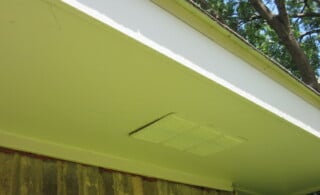 Increasing Attic Ventilation with Soffit Vents
Increasing Attic Ventilation with Soffit Vents 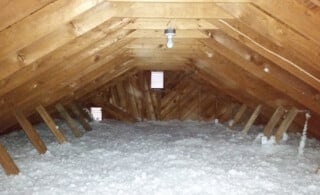 Roof Insulation Captures Escaping Energy
Roof Insulation Captures Escaping Energy 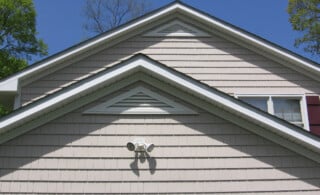 Gable Vents: Let Your Attic Breathe
Gable Vents: Let Your Attic Breathe 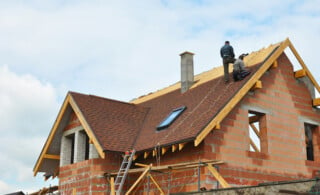 Are Dormers Right for Your Home? A Look at the Pros and Cons
Are Dormers Right for Your Home? A Look at the Pros and Cons 

Hi,
I have static attic roof vents installed,
. is it a good idea also have gable vents?
Thank you; John
Is it accepted practice to have turbine and fixed systems in the same roof?
Or should only one or the other be used.
I live in Texas?
My attic is ridiculously hot if I install a fan (pull out hot air) to help cool my attic will my AC work better right now it takes two to three hours to drop the house 4 degrees. We live in south east Texas.
Our home is 102 yes old and is very stable. There is a window in front and another in the back. We are just under Canada. We don’t have vents but we do have a good draft! Also, even when Windows are open for cross breeze, it’s still hot up there! Some guy is trying to get us to hire him to install vents and I don’t think it’s an issue we need to address. So…
Am I safe to say to him that I think I’ll decline?
Ryan it depends? Do you have gas as forced air? attic fans tend to pull everything thats gas related to pulled through the house, can you say Carbon Monoxide? Whats up in the attic, the ducting for your air and cooling/heating? Nothing HVAC should be outside the home envelope, ducting, plenum, etc…If so you have a problem!
So, ridge vents or static vents with soffett vents are best, not the combination of soffett and gable, and ridge vents is recommended! As it states, on every 300 sq. ft of ceiling space, would need is 1 sq. ft of attic ventilation…
I live in Texas and want to know the best attic ventilation system to use. Getting a new roof in one month. The roof company wants to remove existing turbines. Not sure of the new system they will use. Can you mix roof ventilation systems with turbines or are turbines old technology?
I live in HoustonTX. Having my roof replaced. One story with gas heat and electric AC I have the ridge row, gables on each end of home and turbines. Roofer suggest doing away with turbines and only using gables ridge row and vents. Do you recommend going back with turbines. Roofer says it works against each other.
We have issues with our 1200 square-foot home too much moisture accumulating underneath our roof in the attic causing mildew and mold. We were told we had to much Ventilation going into our attic why isn’t our attic breathing properly? This is a 3/12 pitch roof. We have 7 roof vents and eve vents every 4′. This is twice this house had done this. Our roof is only 6 yrs old and is turning black underneath again! Same as it did before. WE NEED A PROFESSIONAL ATTIC PERSON!!
we have a 3 story condo bldg., an individual opened up his enclosed attic space on the 3rd floor by cutting a hole in the wall. he then put flooring down in this space, also covered the soffit vents.
we now have severe odor problems in the two units directly below this remodel. could these issues be related? are they likely to be related? what recourse do you advise?
Hi,
I live in North Dakota and had a contractor build an attached garage onto our house. We have a small breezeway (8’x12′) between the house and the garage. The contractor installed a ridge vent on the garage but said we didn’t need one on the breezeway. How concerned should I be?
I have static vents and my attic still gets really hot. Can I switch a couple of them to turbine vents? I live in Texas. I have one upstairs room and during the summer months it gets extremely hot up there
i have attic vents and also instaled attic exaust fan and still gets extreamly hot and ac dont work well what can i do to help this mater
I live on Long Island, NY. In the summer it gets to about 90 outside and over 130 in the attic during the peak of the day. We are in the process of converting the attic to living space. I installed 3 large windows. Do I need additional roof ridge vents? The total square footage is about 500. I plan on adding a ductless heat/AC unit. Do I need to install additional roof ridge vents along the peaks to reduce the heat??
I want to put an office in my attic and in the area that I want to put it there is a roof vent what should I do the area that I want to renovate is right over the garage I will be putting an I will be putting a wall air and heating unit in and there is also a window in the area that I will be building in should I leave the vent open and build around it or close it up
Help – purchased home 8 years ago with 2 power attic vents. Things have been ok, low energy bills- house very comfortable. Noticed one of the attic vents was not working. Told that the 2 attic power vents are the only attic ventilation I have ( the house does have vented soffits-every other soffit cover is vented). I had new power vents installed, they are more powerful- move more air than previous ones. Right after noticed house was considerably cooler and I contributed this to new fans. Last evening noticed house was cooler but humidity very high 65-70%. The air conditioner is kicking on frequently for short intervals. I am suspicious my new power vents are to blame. I have turned them off (couple hours) but do not really notice any difference. My air conditioner is still kicking on even though it is set at a higher temp. I do have a HVAC tech coming to look. Do you think my AC problem is related to power vents?
The title said “5 myths” but in actuality revealed none…It’s paramount to keep the attic cool during the summer and warm during the winter. You can easily prevent change by having an exhaust that permits closing and a t-stat that controls the fan. Only a psychometric chart evaluation over time will reveal any benefit.
Replacing roof. Condo unit has soffit and ridge vents, plus 2 side wall vents, one round and one rectangular. Contractor wants to cover side wall vents. I disagree, thinking more ventilation is better.
Your advice ?
I live in HoustonTX. Having my roof replaced. One story with gas heat and electric AC.
Roofer suggests doing away with turbines and only using ridge row and vents. Do you recommend eliminating the turbines. One roofer says he can put square vents in place of the turbines.
One thing with ridge vents installed in older home they didn’t address: Dust. Ever since a roofer talked my husband into replacing the (broken) attic fan with a ridge vent we’re getting tons of dust in the living areas. The altered, more powerful airflow blasts decades old dust through every crevice it can find. The house has also become a lot more difficult to heat in winter. Altogether I consider this ridge vent a very bad idea for our house. If “talking to an expert” always get a second and third opinion from someone who is not contracting for the work. I have learned my lesson and very carefully check building industry fads for whether they actually work for the house we have. Too many good ideas aren’t.
I live in Northern Virginia (hot humid climate in the summer) and use heat pumps to heat and cool my house throughout the year. I have large attic with ridge vents and screened vents at either end of the attic to maintain air flow. I have a shop in my attic for some of my hobbies and it get’s very hot in the summer. Can I put a small swamp cooler or ventless A/C unit up there to cool it only to use while I am in my shop (maybe an hour or two a couple times a week). I want to make sure I don’t do any damage to things I have stored up there (some wooden furniture and holiday decorations) and I especially don’t want to do damage to the roof shingles. That said, if I can, request your recommendations for a suitable reasonably priced product I could use. Please advise… Thanks
As a certified licensed home inspector it is not correct to say too much ventilation is bad for an attic, unless rain/moisture is getting in. Venting a homes attic is a very important, best building practices will say 50% at the ridge and 50% at the soffits, unobstructed. Do not use mechanical means (electric) attic fans. One of the leading causes for fires. More than 50% of the attic fans I see do not work and have current still live to the motor. Best ventilation is open soffit venting to a open vented ridge-vent. Ridge-vent must me installed per the manufactures instructions. One last thought, attic ventilation is not there to get rid of heat, it is there to get rid of excess moisture accumulating from the home. It can do both.
Insulation at least R-38 or more is there for heating and cooling.
Ronald G. Pigeon
Professional Inspection Services